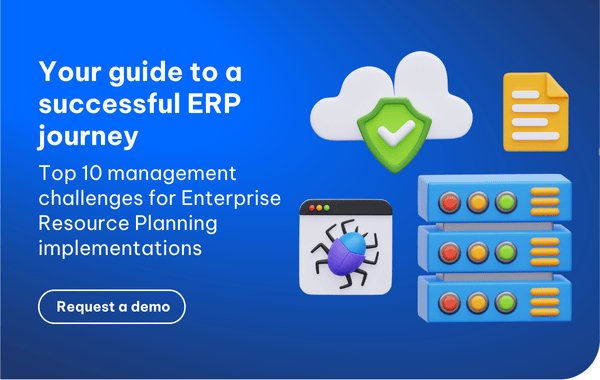As discussed in the last post, the prerequisite for an ERP implementation is planning, which includes three main parts: getting the whole organization involved in the project, removing all potential barriers and looking over the company’s history.
After completing those steps, it’s time to start building the ERP project. Consider the following advice:

Step 4: Develop a smart project structure.
Properly structure the project and clearly establish roles
The lack of a proper structure and clearly defined roles and responsibilities can be a significant problem. Chances are that, without these, the team will duplicate efforts or miss out on properly executing key tasks. As a result, the project may fall behind schedule, which costs time, resources and money.
Recommended steps:
- Conduct a project kick-off session. During this session, which allows team members to bond, clearly set and align expectations and clarify roles and responsibilities. Don’t forget to invite the project sponsor to ensure visibility and participation from the outset.
- Emphasise the integration points between project streams. In the first all-staff meeting, make sure each team member clearly understands his/her role as well as when and how their input will connect with other streams.
- Underline existing internal structures. To recreate a sense of familiarity and to reduce any hindrance to engagement, remind everyone involved about the communication vehicles that are in place and the decision-making bodies that will be involved in the implementation.
Step 5: Create an effective change network.
Right information, right person, right time.
This ideal is essential for navigating and avoiding problems that arise during ERP implementations. A network of influencers should be formed in order to support two-way communications (both formal and informal); therefore, end users can understand what is going on and why.
Recommended steps:
- Hold regular meetings. A change network, which includes key influencers from high positions in all areas of the organisation, should have meetings on a regular basis to keep track of the project. This will help project leaders disseminate information as well as increase visibility for change-management activities.
- Build accountability and ownership within the change network. Entrust project members with control over change-management activities in their areas so that the team can ensure timely and appropriate solutions for unexpected situations.
Step 6: Provide proper training for your organization.
A must for an ERP solution to be accepted and embraced is that your workforce should be well prepared for the transition, not only for the new system but also for the new way of working. In order to build an effective program, you must first estimate, comprehensively, the knowledge requirements and training needs of the organisation. One critical metric to evaluate a successful ERP implementation is that the system is used properly by all users as well as that the work process is sped up significantly. To do this, you have to conduct a training program that addresses critical gaps between the old system and the new one.
Recommended steps:
- Develop a role-based training (on both system and processes). This training is imperative to make sure that the different users can quickly become familiar with the new environment and system. Training materials should be closely connected with the business, and training requirements must be prioritised before going live.
- Design an appropriate training strategy. The training must also fit with the current needs of the organisation as well as provide your trainer with the best conditions that you have. Such preparations for both trainers and end users will help your business make the most out of your ERP system once it is implemented.
After incessant days of planning and executing the project, your ERP system has finally gone live. But is that the end? Certainly not. There are many more details after “go live” that you have to take care of before your business can actually gain benefits from the system.
Guideline to a successful ERP journey – Part 3: Stay on track >>>
Guideline to a successful ERP journey - Part 1: Planning >>>
You can download our full whitepaper “Your guide to a successful ERP journey” now to see all the steps.
 English
English  Vietnamese
Vietnamese 


